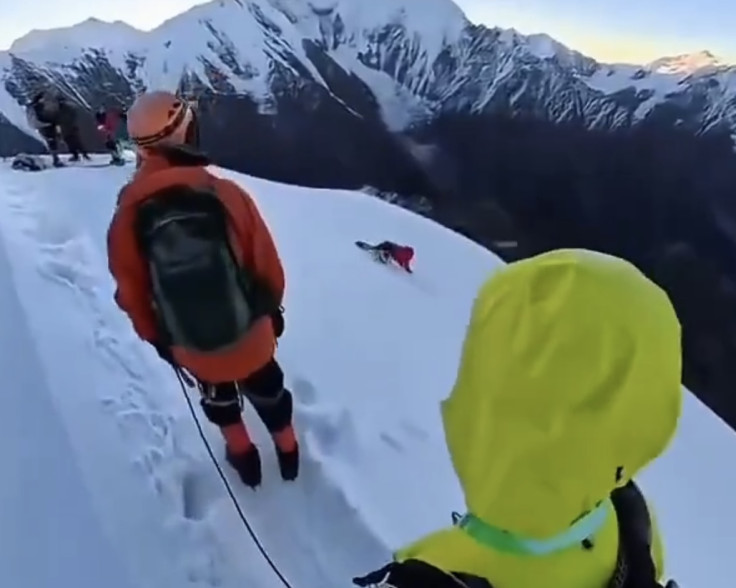Netizens Slam 'Useless' Climbers Who 'Looked On' As Companion Plunges 18,000 Ft To His Death
As footage of the fatal slip circulates online, debates grow over social media's role in risky behavior and the limits of human reaction

On September 25, a group of climbers set out for an ambitious ascent of Nama Peak in China's Sichuan Province — a mountain considered the safest of the Gongga mountain range. But for 31-year-old Mr. Hong, the trek turned tragic as he plunged to his death.
The incident stands as a chilling reminder of the importance of climbing safety. According to reports, Mr. Hong had undone his safety rope to take photos of his companions. Moments later, his crampons caught on the slope, sending him slipping down the mountain and into the rocky terrain below.
After Mr. Hong's fall, his fellow climbers did not attempt to intervene. While some argue there was little they could have done once he slipped, online critics have condemned the group as 'useless' bystanders. Further outrage mounted when it was revealed that the climbers had not obtained the required permits, raising deeper concerns about safety and responsibility.
No one could save her... pic.twitter.com/Mflo6XVdN4
— Crazy Videos 🔞 (@CrazyyHub) September 29, 2025
Blaming Mr. Hong's climbing companions is not accurate, given the circumstances. As the shocking video shows, he was already far out of reach before anyone could react on the icy slope. Without a safety rope securing him to the group, survival was virtually impossible.
Moreover, critics often overlook the psychological reality of such moments. Faced with sudden danger, people experience shock, fear, and paralysis; natural responses that can override quick action. Holding his companions responsible not only ignores these human factors but also unfairly inflames the tragedy of what actually occurred.
It is essential to acknowledge the growing impact of social media on tragedies like this, which is taking an increasingly severe toll on extreme outdoor enthusiasts. With viral attention rewarding the most daring or dramatic photos, many adventurers push past safety limits, sometimes with fatal consequences. In this case, the pursuit of a picture may have cost Mr. Hong his life.
Similar trends are visible in activities such as parkour, where athletes risk serious injury in search of online recognition. As these behaviors gain traction and visibility, the likelihood of accidents associated with content-driven risk-taking will continue to rise.
At this stage, it is important that Mr. Hong's companions are not unfairly burdened with blame. While the tragedy may have been preventable with stricter adherence to safety measures, once he fell, there was nothing they could have done to save him. Directing outrage at the climbing crew does little to reduce future harm; it only compounds the suffering already caused by this loss.
As this incident spreads online, it serves as a stark reminder that safety must take precedence over extremity or internet fame. More than ever, people are chasing the perfect 'viral' image, but no picture, like, or follow is worth more than a life. For anyone seeking adventure, the lesson is clear: safety is king.
© Copyright IBTimes 2025. All rights reserved.





















